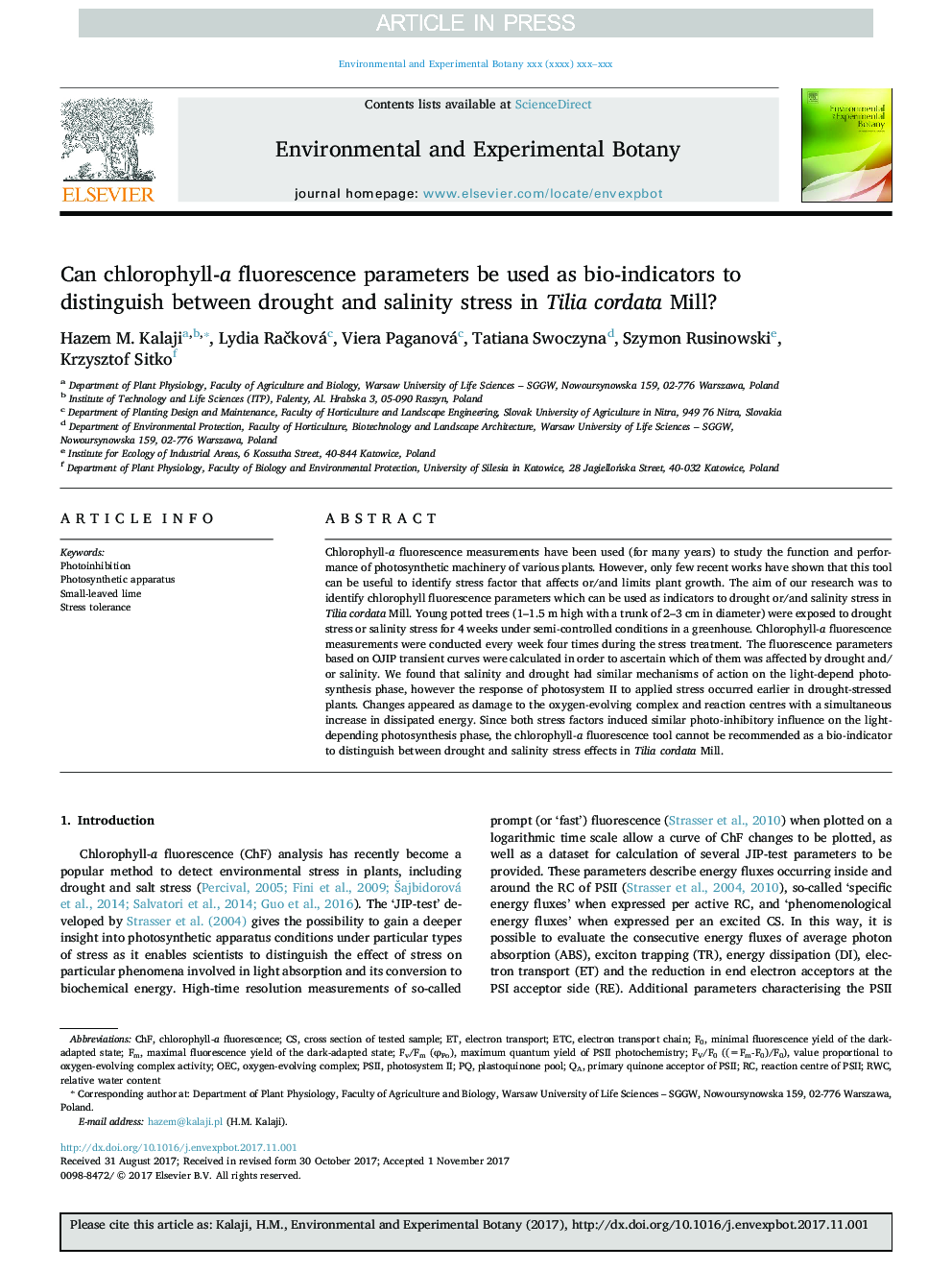| Article ID | Journal | Published Year | Pages | File Type |
|---|---|---|---|---|
| 8886964 | Environmental and Experimental Botany | 2018 | 9 Pages |
Abstract
Chlorophyll-a fluorescence measurements have been used (for many years) to study the function and performance of photosynthetic machinery of various plants. However, only few recent works have shown that this tool can be useful to identify stress factor that affects or/and limits plant growth. The aim of our research was to identify chlorophyll fluorescence parameters which can be used as indicators to drought or/and salinity stress in Tilia cordata Mill. Young potted trees (1-1.5â¯m high with a trunk of 2-3â¯cm in diameter) were exposed to drought stress or salinity stress for 4 weeks under semi-controlled conditions in a greenhouse. Chlorophyll-a fluorescence measurements were conducted every week four times during the stress treatment. The fluorescence parameters based on OJIP transient curves were calculated in order to ascertain which of them was affected by drought and/or salinity. We found that salinity and drought had similar mechanisms of action on the light-depend photosynthesis phase, however the response of photosystem II to applied stress occurred earlier in drought-stressed plants. Changes appeared as damage to the oxygen-evolving complex and reaction centres with a simultaneous increase in dissipated energy. Since both stress factors induced similar photo-inhibitory influence on the light-depending photosynthesis phase, the chlorophyll-a fluorescence tool cannot be recommended as a bio-indicator to distinguish between drought and salinity stress effects in Tilia cordata Mill.
Keywords
Related Topics
Life Sciences
Agricultural and Biological Sciences
Ecology, Evolution, Behavior and Systematics
Authors
Hazem M. Kalaji, Lydia RaÄková, Viera Paganová, Tatiana Swoczyna, Szymon Rusinowski, Krzysztof Sitko,
